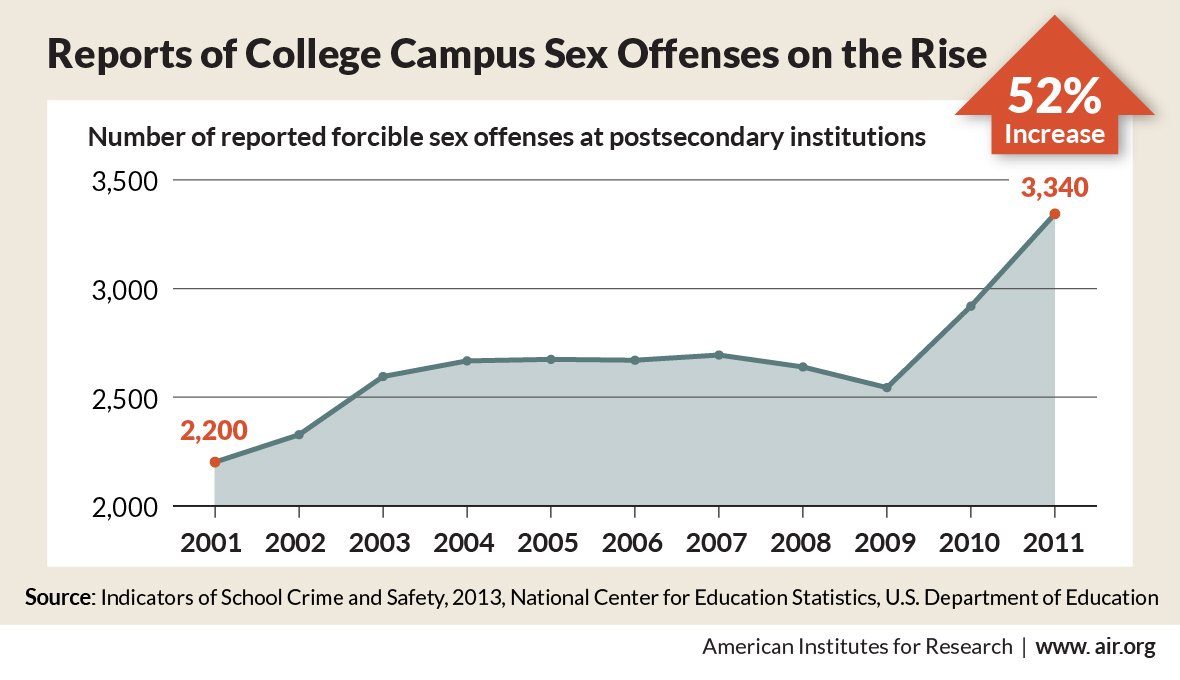Latest 'Indicators of School Crime and Safety' Report Provides New Insight Into Postsecondary Campus Crime
Washington, D.C. – American Institutes for Research (AIR) experts played a major role in producing Indicators of School Crime and Safety 2013, which was released today by the National Center for Education Statistics (NCES) and the Bureau of Justice Statistics (BJS). The annual report presents the most current data on crime and safety at schools and on college campuses from the perspectives of students, teachers, principals and postsecondary institutions.
 This year’s report includes a newly added section on criminal incidents at postsecondary institutions. Additional topics covered include student and teacher victimization; bullying and cyber-bullying; drugs and alcohol use; gun access; school security measures; security staff presence; and student perceptions of personal safety at school. Where available, data on crimes that occur outside of school grounds are offered as a point of comparison.
This year’s report includes a newly added section on criminal incidents at postsecondary institutions. Additional topics covered include student and teacher victimization; bullying and cyber-bullying; drugs and alcohol use; gun access; school security measures; security staff presence; and student perceptions of personal safety at school. Where available, data on crimes that occur outside of school grounds are offered as a point of comparison.
This year’s report shows that:
- In 2012, students ages 12–18 were victims of about 1,365,000 nonfatal victimizations at school, including 615,600 thefts and 749,200 violent victimizations. The victimization rate for these students decreased from 181 victimizations per 1,000 students in 1992 to 52 victimizations per 1,000 students in 2012.
- During the 2011–12 school year, a higher percentage of public than private school teachers reported being threatened with injury (10 versus 3 percent) or being physically attacked (6 versus 3 percent) by a student from their school.
- During the 2011–12 school year, 88 percent of public schools reported that they controlled access to school buildings by locking or monitoring doors during school hours, and 64 percent reported that they used security cameras to monitor the school.
- In 2011, there were 30,400 criminal incidents at public and private two-year and four-year postsecondary institutions that were reported to police and security agencies, representing a 5 percent decrease from 2010 (31,900) and a 27 percent decrease from 2001 (41,600).
- The number of reported forcible sex crimes on college campuses increased by 52 percent, from 2,200 in 2001 to 3,300 in 2011.
- The number of disciplinary referrals for drug law violations reported by public and private two-year and four-year postsecondary institutions increased from 20.5 per 10,000 students in 2001 to 33.8 per 10,000 students in 2011. Also, the number of referrals for liquor law violations per 10,000 students was higher in 2011 (128.1) than in 2001 (111.3).
AIR experts were involved in all aspects of the publication, including statistical analysis, writing of key findings, report design, and quality control review. AIR has co-written the Indicators of School Crime and Safety reports since 1999.
The full report is available online at http://nces.ed.gov/pubs2014/2014042.pdf.
About AIR
Established in 1946, with headquarters in Washington, D.C., the American Institutes for Research (AIR) is a nonpartisan, not-for-profit organization that conducts behavioral and social science research and delivers technical assistance both domestically and internationally in the areas of health, education, and workforce productivity. For more information, visit www.air.org.
###